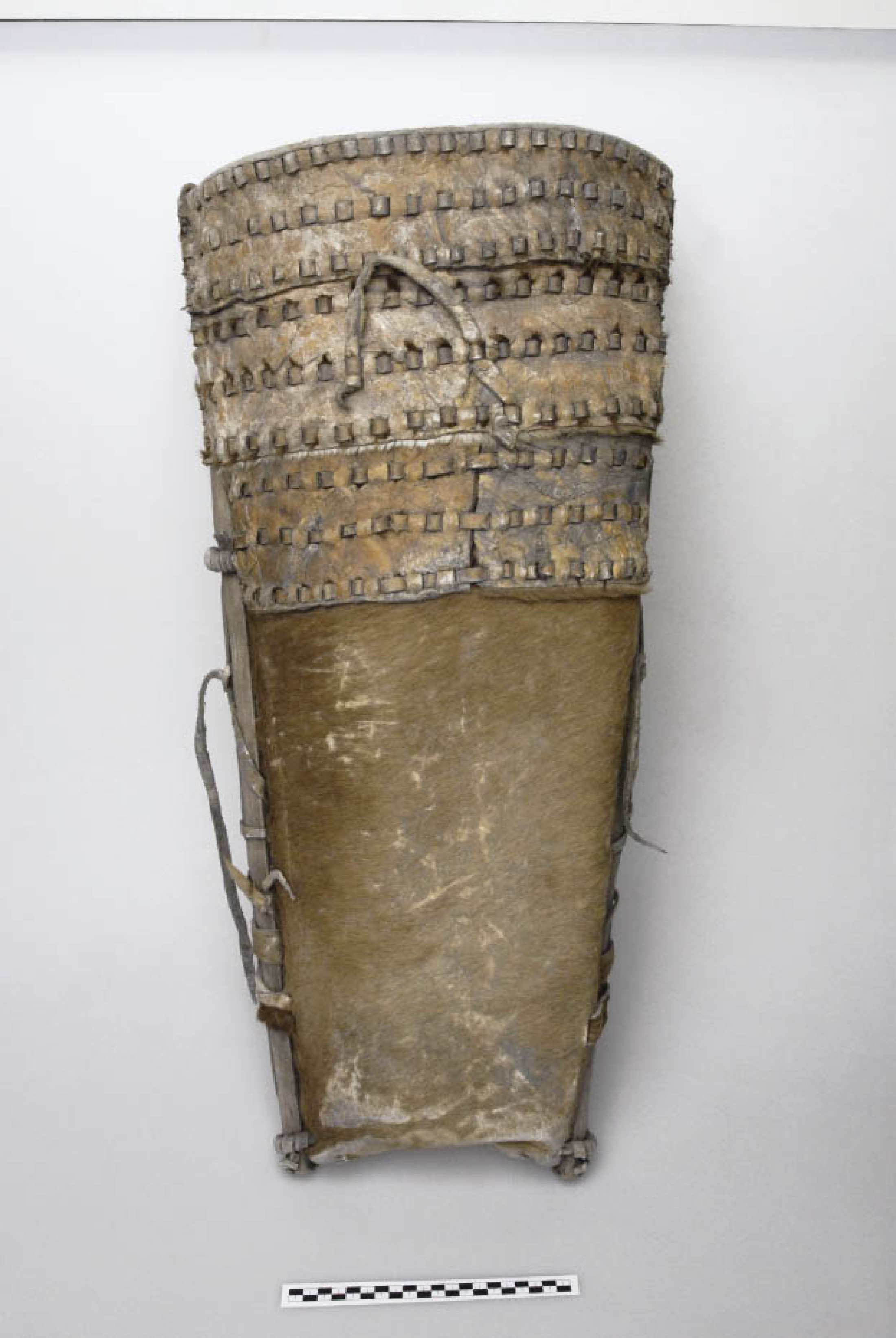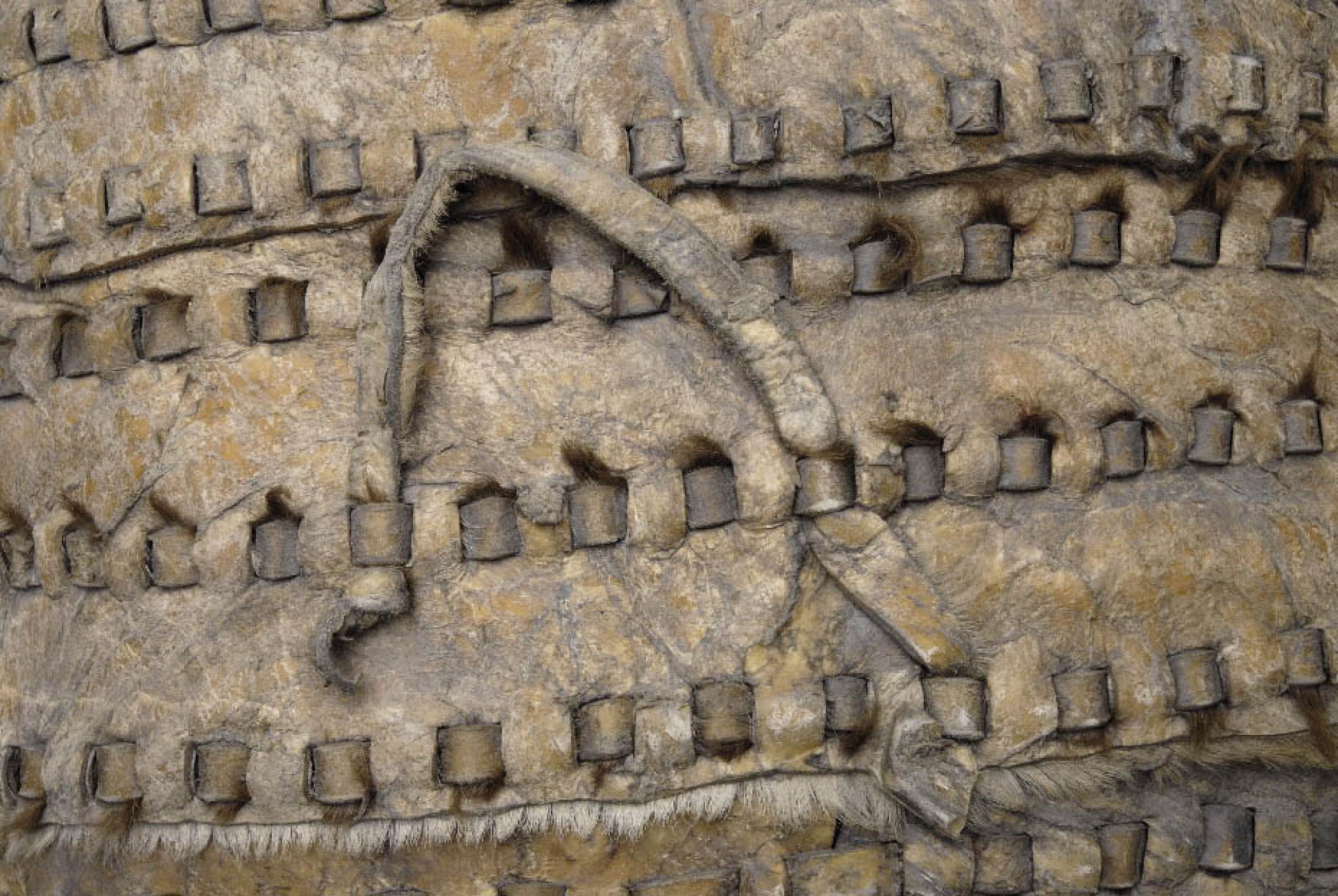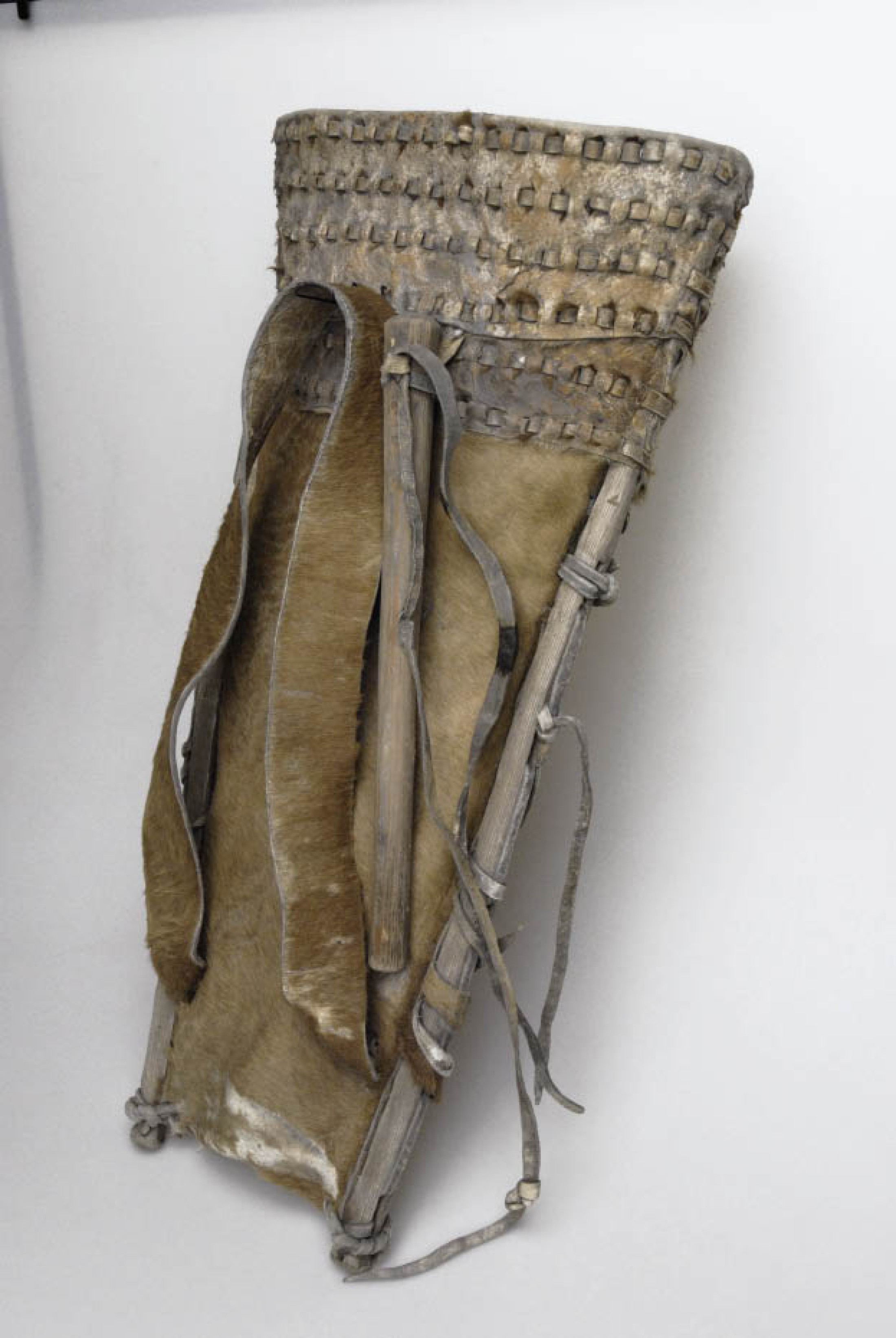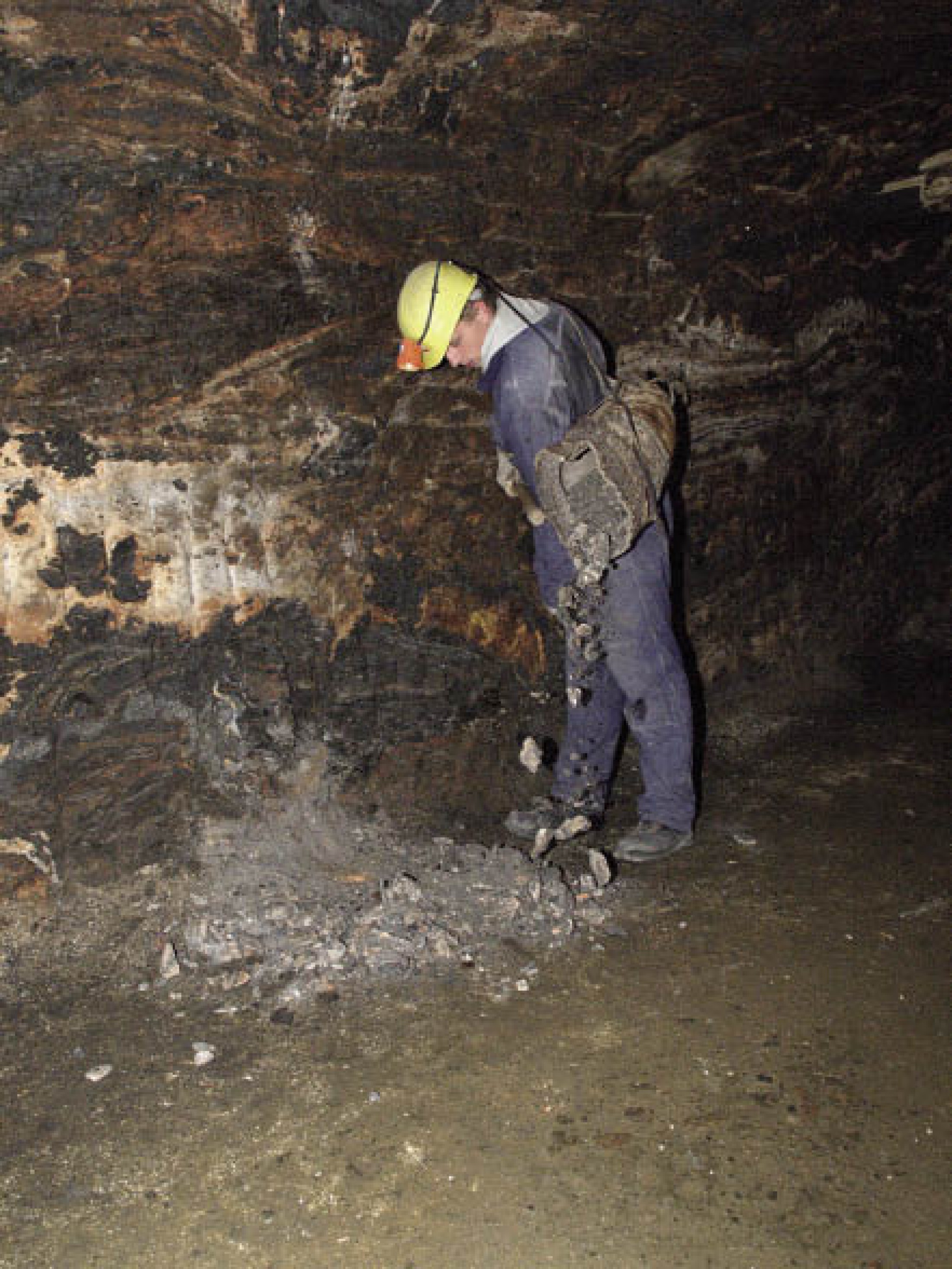Carrysacks – ultimate efficiency
The well-known carrysacks are among the most beautiful and fascinating finds from the mine. They were used to transport the salt through the galleries. We know of five such carrysacks.Construction method
Use
Evidence of the organizational structure in the mine
Construction method
All carrysacks were made in the same way […], although displaying differences in handiwork. The basic form is a piece of hide cut in an hourglass shape, folded and sewn together laterally. The rim is hemmed over and reinforced with thongs. Two flanking wooden frame elements provide vertical reinforcement. The wide shoulder strap is also made of hide and fixed at both ends to the lower part of the carrysack, to be supported on the right shoulder. Tests have shown that the length of the strap must have been precisely adapted to the individual stature; this is why the strap is not firmly knotted with the carrysack, but wrapped several times around the strips of wood – a Bronze Age quick release fastener. A short wooden stick extends over the left shoulder; the stick is fastened to the upper part of the carrysack and has to be pulled down during carrying.Use
The disadvantages of this construction, namely the excessive strain on one shoulder and habitual use of one hand, coupled with being off-balance are compensated for by one big advantage: the carrysack, weighing up to 30 kilos, can be emptied quickly and easily by dropping the stick away from the shoulder. This is however only an advantage if the carrysack is used without interruption over an extended period.Evidence of the organizational structure in the mine
The bespoke construction of the individual carrysacks is highly functional and suggests a strict division of labour, as well as a continuous work flow. These items clearly show the highly structured nature of Bronze Age mining, of which they are not the only example. This quest for efficiency can be detected at various stages in the mining process of the time. From a present-day perspective, this rigid organisation can only be explained by the objective of minimizing nonproductive down time. An objective which only seems sensible if the quantity of salt produced keeps up with the optimised work flow. In other words, optimised mining logistics will only pay off if it is possible to produce considerable amounts of salt in a continuous fashion.(Reschreiter, H. – Kowarik, K.)





